Commercial, Distributed Energy Resources, Energy Efficiency, Energy Procurement, Energy Storage, GHG Emissions, Industrial, Utilities, Solar - July 8, 2019
Distributed Energy Forum Wrap-Up
Smart Energy Decisions' inaugural Distributed Energy Forum focused on creating and executing strategies to maximize opportunities from the deployment of distributed energy resources by large power users. Held at the Gaylord Rockies Resort in Denver on June 24-26, the event brought together large electric power users from commercial, industrial, institutional and government sectors, along with suppliers and utilities.
"This event will foster collaboration to help accelerate the adoption of distributed energy resources, said John Failla, founder and editorial director of Smart Energy Decisions, in his opening remarks. "While there’s been a lot on DERs from the utility perspective, this is the first event, and original research, on the phenomenon of deployment of DERs from the customer’s perspective."
Following are brief highlights from the Distributed Energy Forum. More extensive coverage will follow in our Distributed Energy Forum Insights report, available later this year.
“Walmart’s journey with DERs"
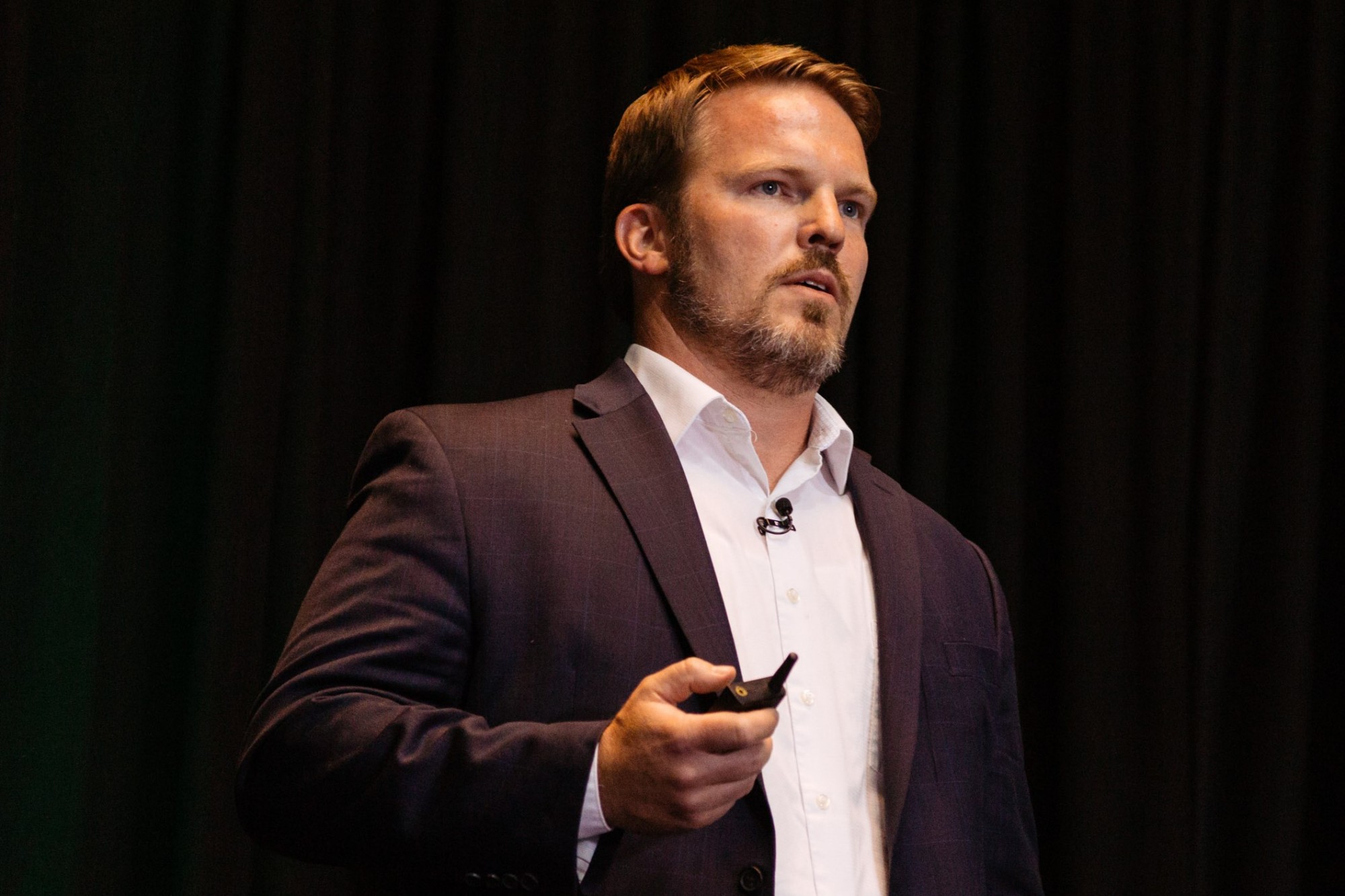 The opening keynote, presented by Joby Carlson, director of global sustainability at Walmart, noted that the retailer is “uniquely positioned because we’re located within 50 miles of every citizen in the United States so when it comes to distributed energy, we take that to heart. We have a real ability to influence just about every city in America and we take that responsibility seriously.
The opening keynote, presented by Joby Carlson, director of global sustainability at Walmart, noted that the retailer is “uniquely positioned because we’re located within 50 miles of every citizen in the United States so when it comes to distributed energy, we take that to heart. We have a real ability to influence just about every city in America and we take that responsibility seriously.
Carlson provided an update on Walmart’s DER progress to date, including onsite solar, fuel cells, and battery storage. Progress on EV charging infrastructure has been “fast and furious,” he said, noting that currently, “you can drive your electric vehicle from Houston to Chicago, stopping only at Walmarts or Sam’s Clubs to recharge. Ultimately, we’re going to end up with about a thousand parking stalls across the United States by 2020.
Summing up, Carlson said, "The market has changed so much. The opportunities have grown. If you haven’t gotten started, now is the time. There are more options and tools on the table for you than ever before."
“Utilities rising to the DER challenge"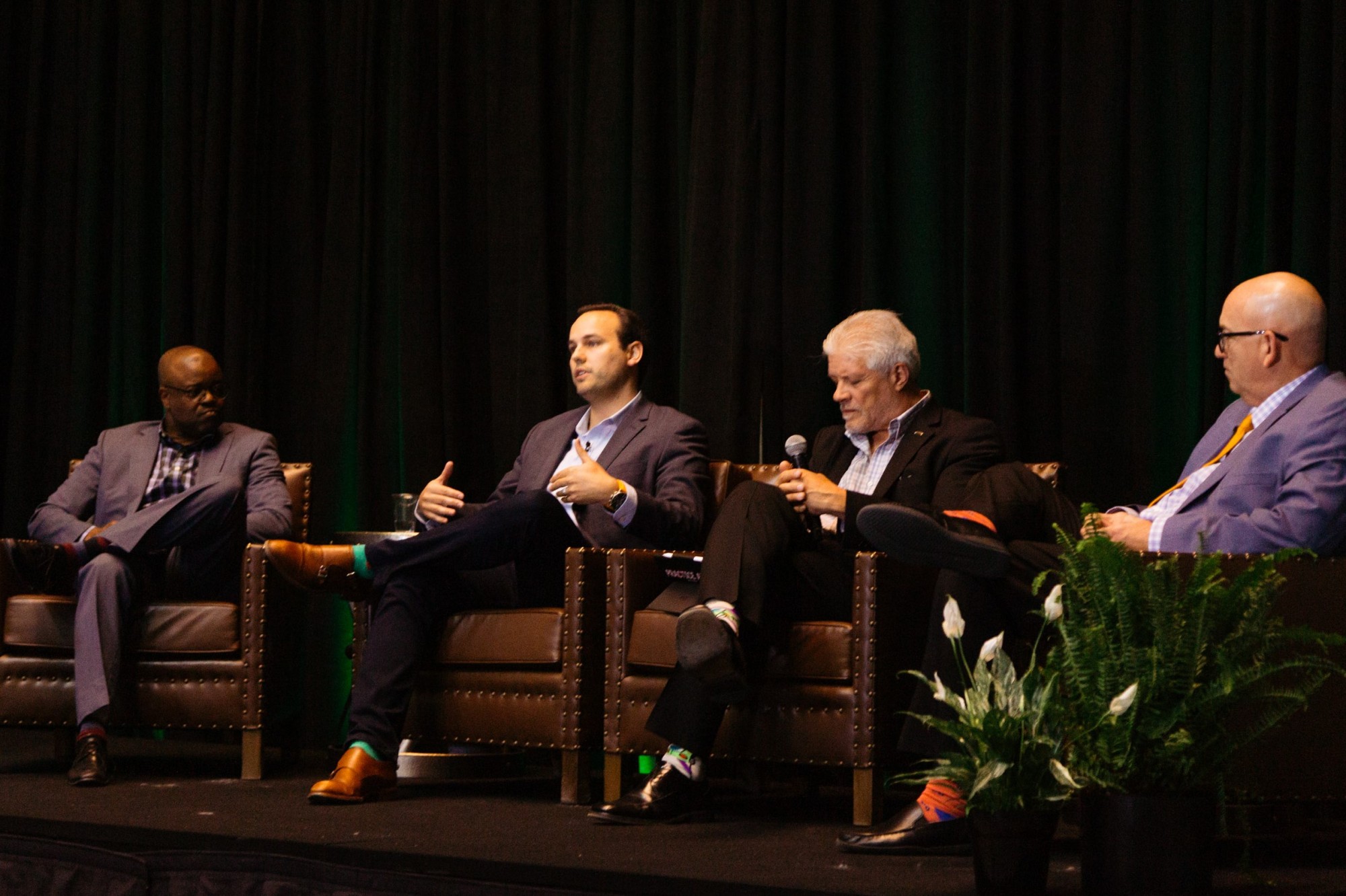 Moderator Karl Rábago asked what a customer should think about when first approaching their utility about a DER project. Jerome Davis, regional vice president, Xcel Energy, advised them to start off by expressing their objectives. “Start at a very high level because we are sometimes talking past each other. I hear renewables, but they really are talking about carbon. I hear carbon, but it’s electrification. I want to make sure we’re talking about the same road map and then we can lay the plans out on the best way to reach it.
Moderator Karl Rábago asked what a customer should think about when first approaching their utility about a DER project. Jerome Davis, regional vice president, Xcel Energy, advised them to start off by expressing their objectives. “Start at a very high level because we are sometimes talking past each other. I hear renewables, but they really are talking about carbon. I hear carbon, but it’s electrification. I want to make sure we’re talking about the same road map and then we can lay the plans out on the best way to reach it.
Ryan Kiley, director of product development, Consumers Energy, talked about using DER in resiliency programs as part of the bigger picture. “Resiliency is something that doesn’t have to be necessarily valued on its own because it can be a byproduct of other things that you’re doing, he said. As an example, he described a battery storage pilot currently running that is “reserving a small percentage of the battery to be there for backup power. Every other hour of the day it’s doing all these other things. You don’t necessarily have to fund a project with just resiliency in mind.”
DERs have been part of a transformative shift inside American Electric Power, according to Barry Mosser, manager national customers - economic & business development. “We’ve really made an effort to be more engaged in understanding what’s important to customers and when can they execute on some of this new technology. At the same time, we’re trying to educate our regulators that this technology is available and we need to look at it a little bit differently.”
“The Future of Distributed Energy Resources”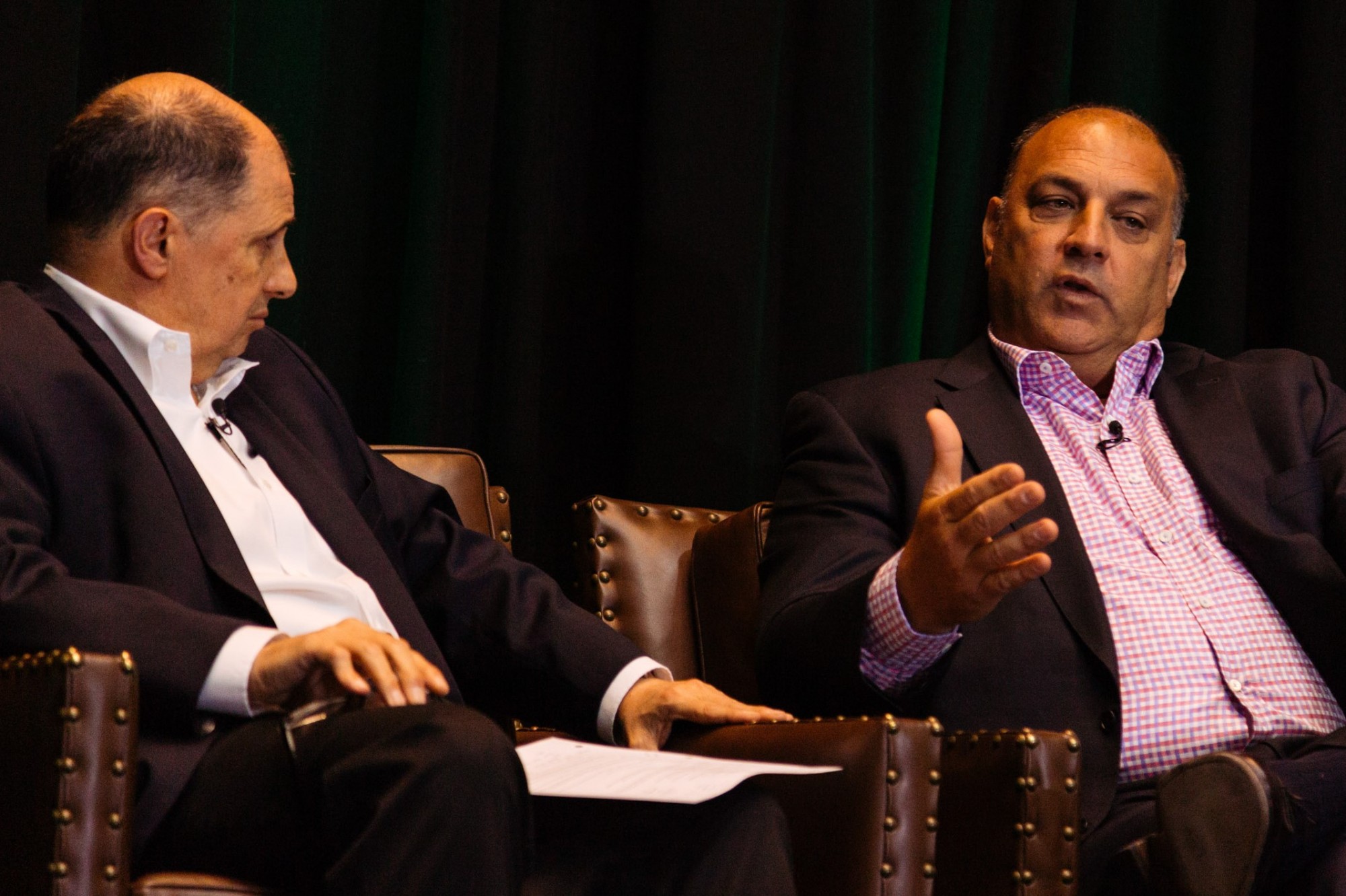 Discussing the growth of DER solutions with John Failla, Steve Moffitt, president, NRG Distributed Energy Resources, said, “I think we’re in the midst of a perfect storm. On the supply side, we’re seeing these interruptible or intermittent renewable resources and on the demand side we’re seeing the demand or load density on a distribution network that utilities have traditionally not invested a lot of money in – they’ve invested in transmission and generation. And so it’s putting a lot of pressure on that side of the network. DER solutions at that level will provide a great benefit to the utilities and asset that I don’t think they fully appreciate yet.
Discussing the growth of DER solutions with John Failla, Steve Moffitt, president, NRG Distributed Energy Resources, said, “I think we’re in the midst of a perfect storm. On the supply side, we’re seeing these interruptible or intermittent renewable resources and on the demand side we’re seeing the demand or load density on a distribution network that utilities have traditionally not invested a lot of money in – they’ve invested in transmission and generation. And so it’s putting a lot of pressure on that side of the network. DER solutions at that level will provide a great benefit to the utilities and asset that I don’t think they fully appreciate yet.
"Optimizing plant strategies with distributed energy resources"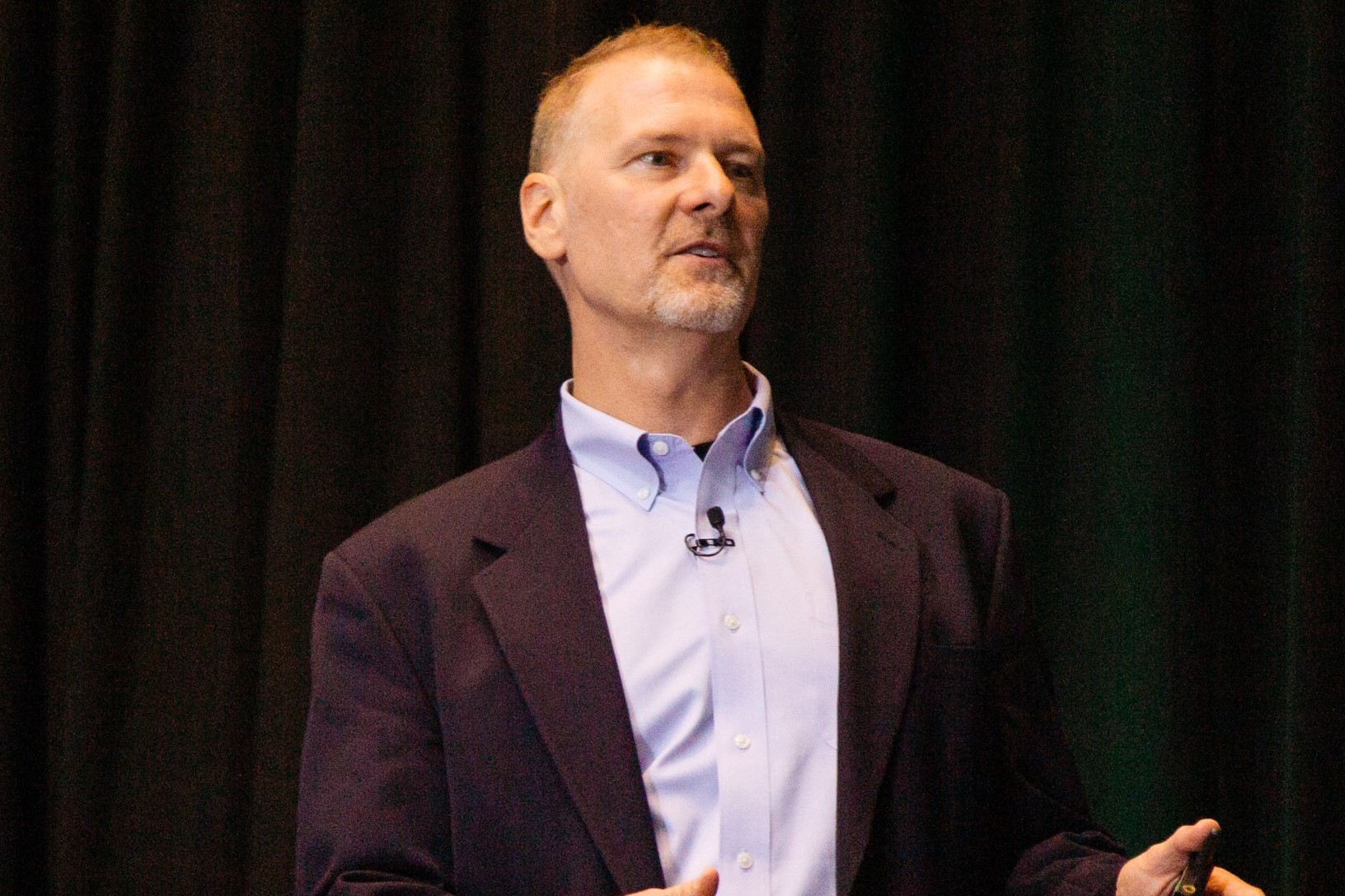 While General Mills has set a goal to reach a 28% improvement in their GHG footprint from a 2010 baseline in 2025, Daren Kaiser, global energy strategy leader, discussed General Mills’ shorter-term global energy goals for the next three years. First, the company will “impact greenhouse gases by improving energy efficiency 3 percent a year, and then the corollary is that that’s going to drive productivity cost savings of a little more than $3 million a year.” Finally, he said, the company has a continuous improvement program called Zero Loss Culture. “We want to make sure we’re advancing this culture in all of the work that we do in the areas of safety, reliability, and productivity.”
While General Mills has set a goal to reach a 28% improvement in their GHG footprint from a 2010 baseline in 2025, Daren Kaiser, global energy strategy leader, discussed General Mills’ shorter-term global energy goals for the next three years. First, the company will “impact greenhouse gases by improving energy efficiency 3 percent a year, and then the corollary is that that’s going to drive productivity cost savings of a little more than $3 million a year.” Finally, he said, the company has a continuous improvement program called Zero Loss Culture. “We want to make sure we’re advancing this culture in all of the work that we do in the areas of safety, reliability, and productivity.”
“Winning Strategies for Solar-Plus-Storage”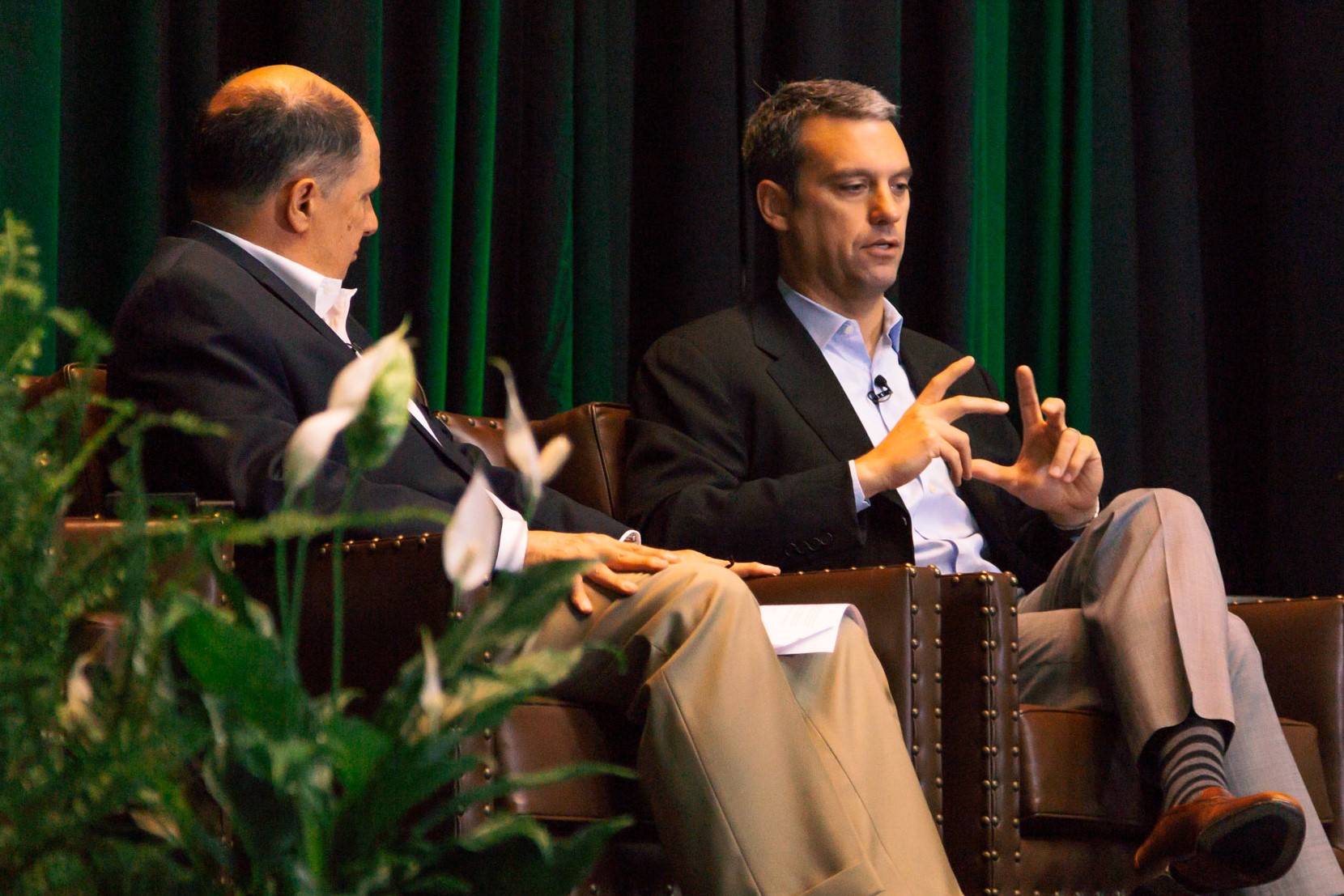 During an executive interview with John Failla, Chris Elias, senior director of business development, SunPower, appraised the regional differences in the growth of energy storage, noted that even with the declining costs of storage, “you do, generally speaking, need some form of incentive to make these projects pencil.” He cited California, New York, and Massachusetts as current successful examples. “As regulators and policymakers see the value of storage as something that can help address some of the challenges that come with the benefits of renewable energy, this technology is starting to get more incentivized and that’s going to lead to wider deployment in the pretty near future.”
During an executive interview with John Failla, Chris Elias, senior director of business development, SunPower, appraised the regional differences in the growth of energy storage, noted that even with the declining costs of storage, “you do, generally speaking, need some form of incentive to make these projects pencil.” He cited California, New York, and Massachusetts as current successful examples. “As regulators and policymakers see the value of storage as something that can help address some of the challenges that come with the benefits of renewable energy, this technology is starting to get more incentivized and that’s going to lead to wider deployment in the pretty near future.”
"The State of Distributed Energy Resources 2019"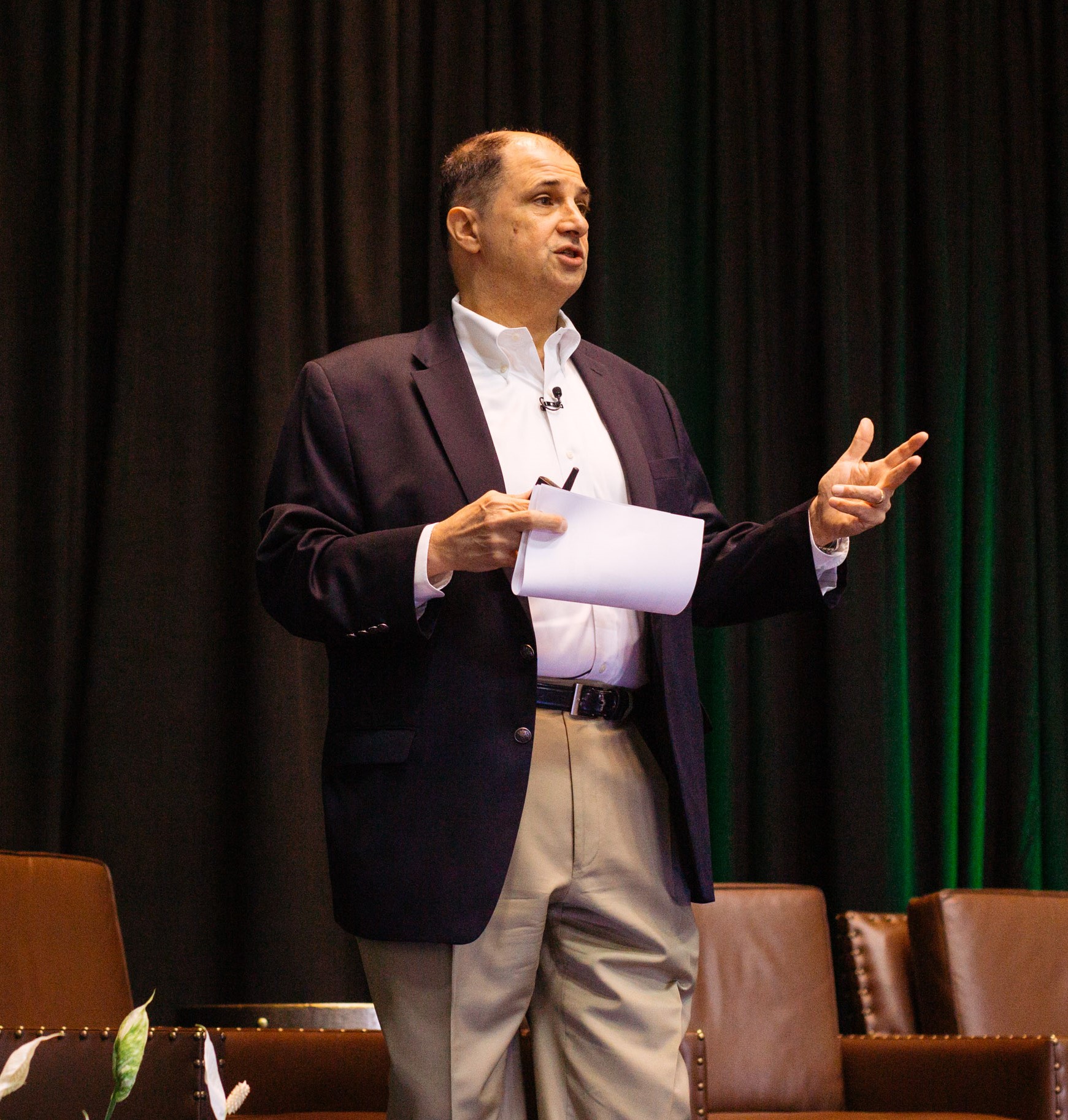 John Failla presented results from this first-of-its-kind research, conducted by Smart Energy Decisions detailing customer plans, drivers and obstacles to deployment of DERs. The data showed energy storage, fuel cells, microgrids, and onsite solar are expected to show the largest growth in the near future. Failla noted, "While companies are attracted to emissions reduction and sustainability, they’re motivated to act on reducing cost." This is seen in the growth of the use of third-party entities for DERs, including as-a-service models, energy service contracts, and utility owned and operated programs. "There is, without question, a definitive trend for companies to want to use other people’s money to deploy these technologies," said Failla.
John Failla presented results from this first-of-its-kind research, conducted by Smart Energy Decisions detailing customer plans, drivers and obstacles to deployment of DERs. The data showed energy storage, fuel cells, microgrids, and onsite solar are expected to show the largest growth in the near future. Failla noted, "While companies are attracted to emissions reduction and sustainability, they’re motivated to act on reducing cost." This is seen in the growth of the use of third-party entities for DERs, including as-a-service models, energy service contracts, and utility owned and operated programs. "There is, without question, a definitive trend for companies to want to use other people’s money to deploy these technologies," said Failla.
“How Cinemark makes DERs work, both as a property owner and a tenant”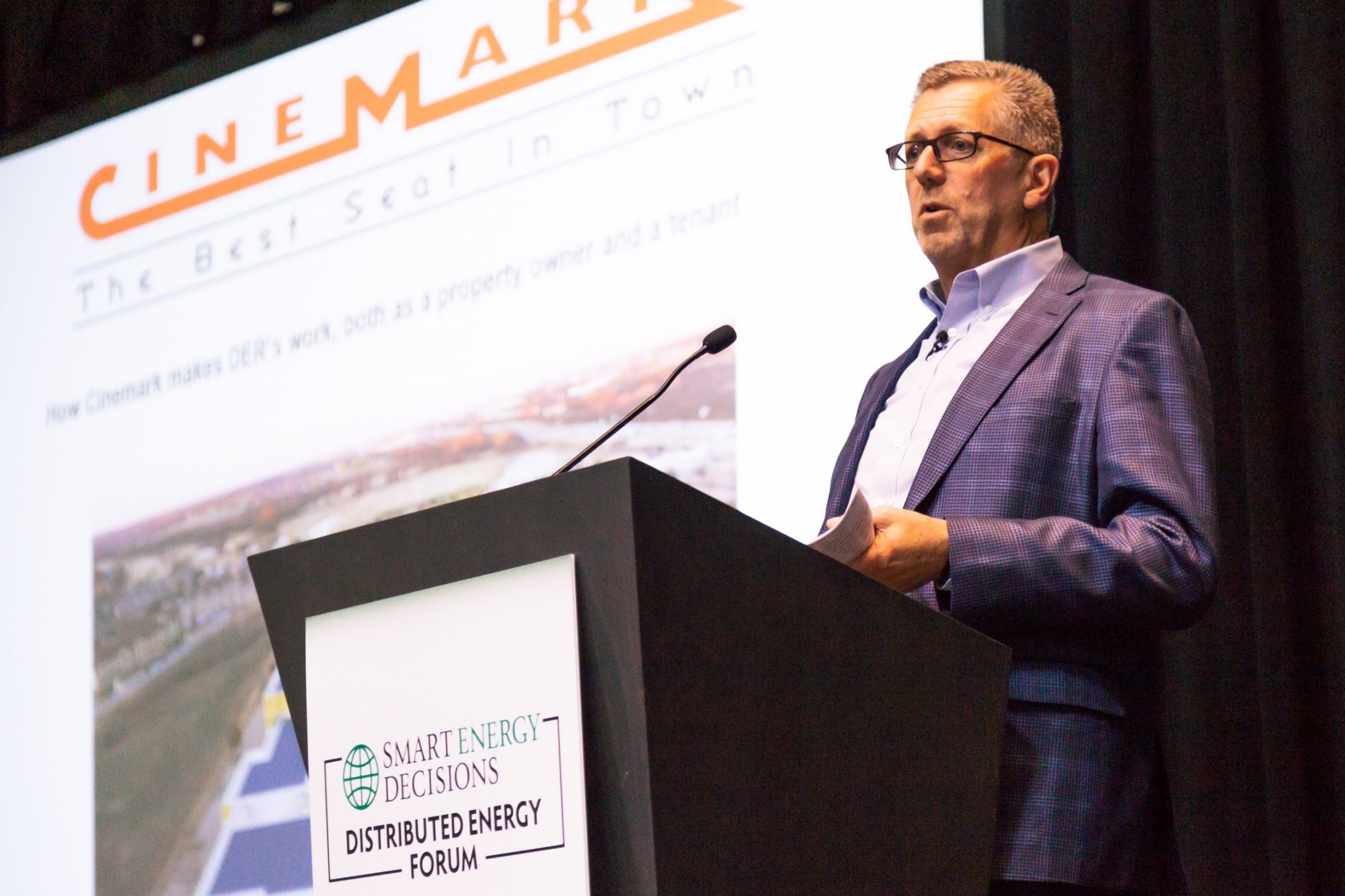 When Cinemark first installed EV charging stations at their theaters, recalled Art Justice, vice president of energy and sustainability, customers reacted negatively to having to pay to charge their vehicles so the company changed its model. They are now rolling out a program in several major markets where a provider installs the technology and pays rent to Cinemark in exchange for selling advertising on screens in the parking lot, which also gets the opportunity to run their own ads. The new solution is a win on many levels. “We have a chance with their charging station to communicate with our customers if they have the Cinemark app," said Justice. " We think it adds a lot. It’s free for the customers. We get reimbursed for the energy and we get rent. So, it’s a great deal for us we think and they’re nice amenities that enhance the look of our building.”
When Cinemark first installed EV charging stations at their theaters, recalled Art Justice, vice president of energy and sustainability, customers reacted negatively to having to pay to charge their vehicles so the company changed its model. They are now rolling out a program in several major markets where a provider installs the technology and pays rent to Cinemark in exchange for selling advertising on screens in the parking lot, which also gets the opportunity to run their own ads. The new solution is a win on many levels. “We have a chance with their charging station to communicate with our customers if they have the Cinemark app," said Justice. " We think it adds a lot. It’s free for the customers. We get reimbursed for the energy and we get rent. So, it’s a great deal for us we think and they’re nice amenities that enhance the look of our building.”
“Establishing the Value of Resiliency"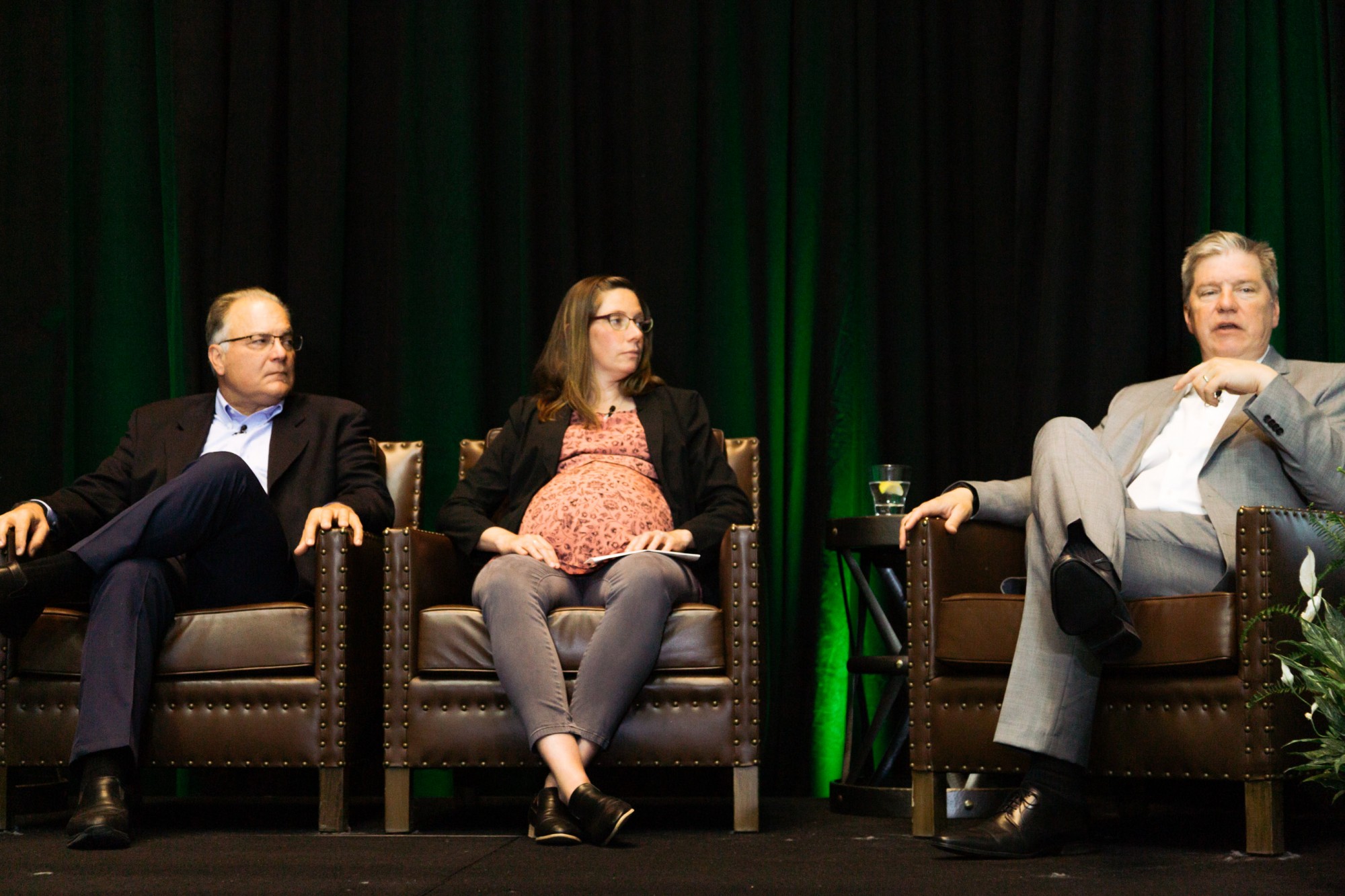 In developing resiliency plans for Bristol-Myers Squibb, Frank Incontrera, director of global energy services, explained the complexity of the process: "We evaluate everything on a site-by-site basis including the requirements of a particular facility, the location that it’s in, and the associated risks. We look at the grid itself, the stability of it, what it would take to get back up if we were to go down, and then we load in the basic backup assets to that process"
In developing resiliency plans for Bristol-Myers Squibb, Frank Incontrera, director of global energy services, explained the complexity of the process: "We evaluate everything on a site-by-site basis including the requirements of a particular facility, the location that it’s in, and the associated risks. We look at the grid itself, the stability of it, what it would take to get back up if we were to go down, and then we load in the basic backup assets to that process"
Eliza Hotchkiss, senior resilience analyst. Strategic Energy Analysis Center at the National Renewable Energy Laboratory (NREL), explained that resiliency planning should start with a risk assessment to identify the hazards, threats, and vulnerabilities to a specific organization, followed by developing creative solutions to solve those challenges. “We often do this through stakeholder engagement because people who are working on the ground know what their challenges are and they also often come up with the most creative solutions.” Hotchkiss also advised holistic assessments and solutions. “If you address one issue, oftentimes you’re ignoring other issues that can be addressed through the same process. So, we don’t just look at energy, we don’t just look at water. We look at communications transportation, all sorts of infrastructure, social economic challenges, that might be vulnerabilities in the future.”
“At Michigan State University we have a 5,200-acre campus that could exist all by itself if the rest of the grid stopped working,” said Dr. Wolfgang Bauer, University Distinguished Professor, Associate Vice President for Administration. The campus produces its own electricity and heat, pumps water out of the ground and operates its own wastewater treatment plant – all crucial for a 5,200-acre campus that is home to not only students and faculty as well as 18 national research labs – all in an area where temperatures can fall to -20 degrees. “In the 31 years that I’ve worked at Michigan State University, we’ve never had an outage.”
"Navigating the DER Regulatory Landscape"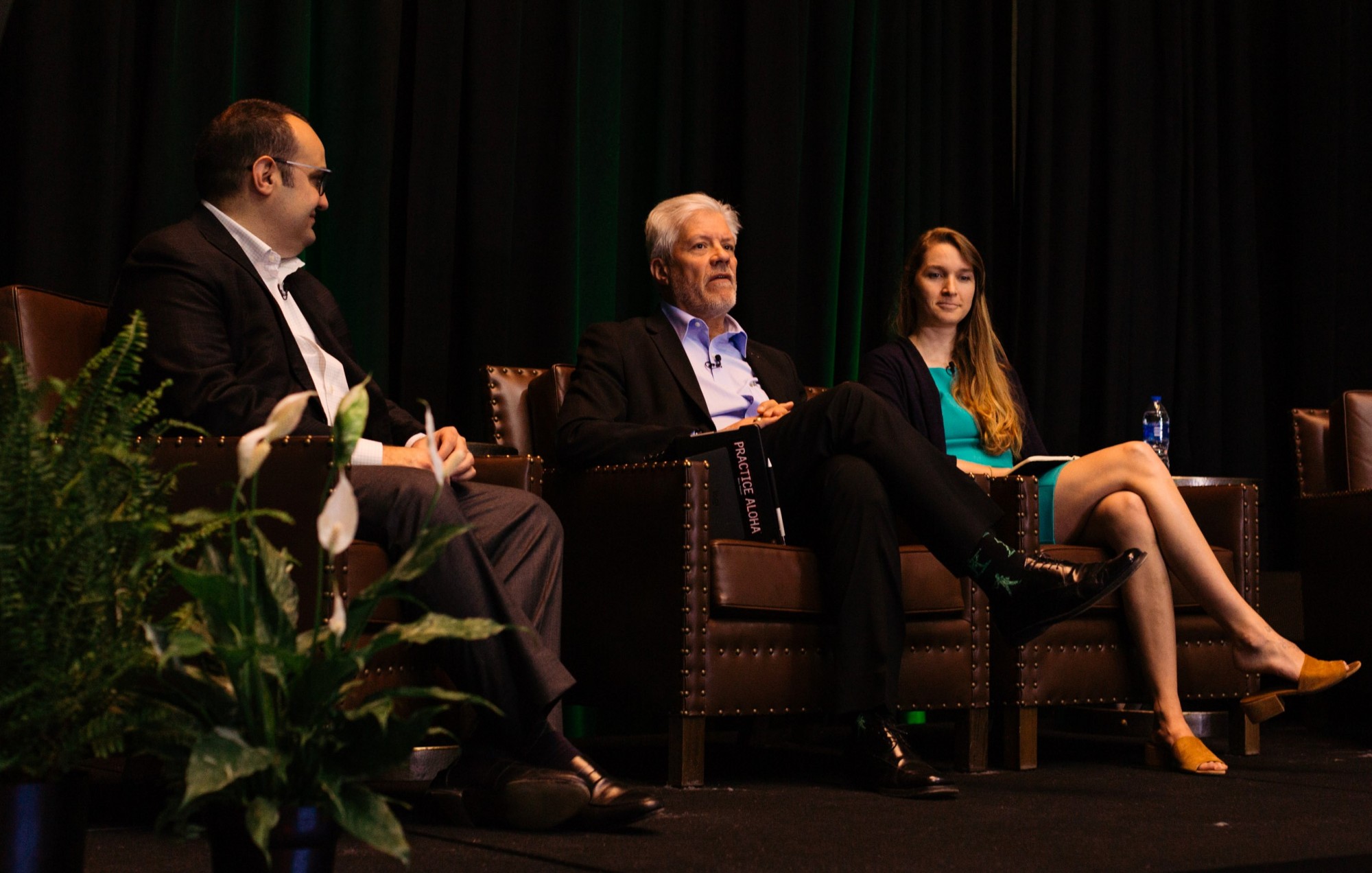 Ali Ahmed, principal, Green Strategies LLC began the discussion by asking why C&I companies should have an awareness of the regulatory landscape. Jennifer Helfrich, manager of state policy at Ceres, responded, "DERs are new. Rooftop solar is furthest along, but all of them are still pretty new in the regulatory landscape and in the history of electricity. We’re seeing a lot of the regulatory and statutory frameworks that will define how these are used being developed now. In North Carolina and Virginia, we’re seeing grid modernization. In Ohio the power forward process. Illinois, next grid process. We’re seeing Minnesota develop perform performance-based rates. We’re seeing distributed resource plans that you haven’t seen before. We’re seeing pilots in storage and EVs. So, if you want to be part of designing these markets and ensuring continued innovation, and cost-effective, user-friendly access to these technologies, then you need to be part of the conversations for how they’re being set up. And that’s more than just regulation - there’s also legislative and state administration efforts that are changing how these technologies can be used.
Ali Ahmed, principal, Green Strategies LLC began the discussion by asking why C&I companies should have an awareness of the regulatory landscape. Jennifer Helfrich, manager of state policy at Ceres, responded, "DERs are new. Rooftop solar is furthest along, but all of them are still pretty new in the regulatory landscape and in the history of electricity. We’re seeing a lot of the regulatory and statutory frameworks that will define how these are used being developed now. In North Carolina and Virginia, we’re seeing grid modernization. In Ohio the power forward process. Illinois, next grid process. We’re seeing Minnesota develop perform performance-based rates. We’re seeing distributed resource plans that you haven’t seen before. We’re seeing pilots in storage and EVs. So, if you want to be part of designing these markets and ensuring continued innovation, and cost-effective, user-friendly access to these technologies, then you need to be part of the conversations for how they’re being set up. And that’s more than just regulation - there’s also legislative and state administration efforts that are changing how these technologies can be used.
When deciding if and when to engage, said Karl Rábago, executive director of the Pace Energy and Climate Center, Pace Law School, the first step is to build awareness. “The members of your team should dedicate some amount of time to just tracking what’s going on. Scan the headlines and stay up to date. You’ll build a competence around it.” The next step: “Reach out to your utility account reps. They are tracking these things and they have seen what other large customers are starting to ask for. Have conversations, routine check-ins with them.” Next, Rábago advised, "There are increasingly groups of large customers who are getting together and sharing some ideas. In some places, it’s pretty competitive, but there’s opportunity for overlap.” Finally, “and absolutely most importantly, talk to the people in organizations who make it a specialty of being involved with these issues. We have opinions, but you can learn from figuring out how we tick. It’s a contact sport - get a little contact.
"Charting a course for DERs at Tyson"
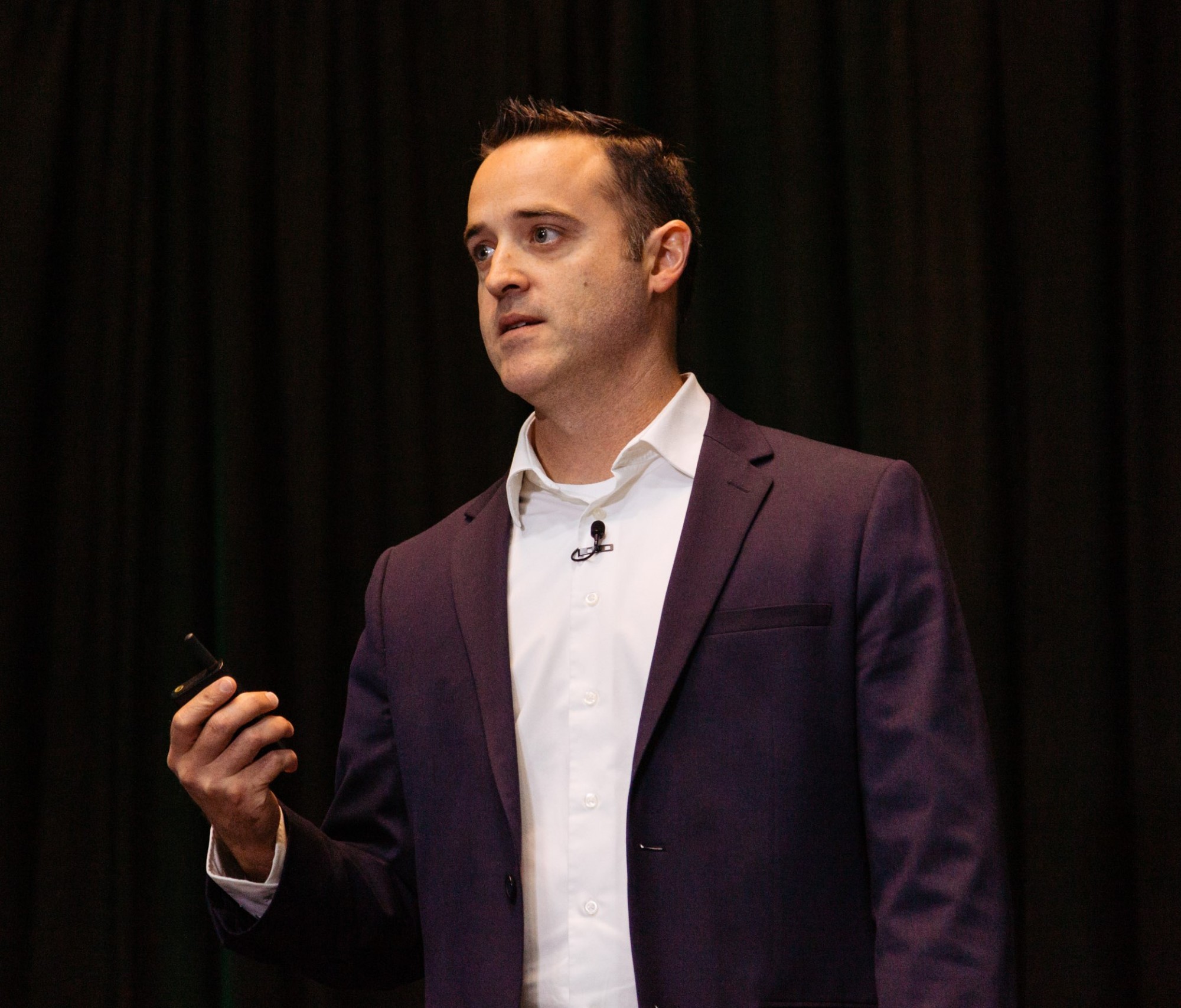 Tyson is in “Year One of getting serious about reducing our carbon footprint," according to Alex Floyd, senior manager, sustainable food strategy, who explained, "We started with a goal,” which was a 30% GHG reduction by 2030. "Some people say, 'Oh, you started with a goal before you even like laid out the plan?' But I think this is really common. You’re not going to run a marathon and just go out running. You’re going to set that goal then build out the plan to get there." Identifying three key areas to address in order to meet their goal - electricity supply ("This is where our DERs are primarily going to fit into our strategy."), efficiency by design, and demand-side efficiency - Floyd said, "I’ve seen challenges. I’ve seen a lot of opportunities. It’s really exciting."
Tyson is in “Year One of getting serious about reducing our carbon footprint," according to Alex Floyd, senior manager, sustainable food strategy, who explained, "We started with a goal,” which was a 30% GHG reduction by 2030. "Some people say, 'Oh, you started with a goal before you even like laid out the plan?' But I think this is really common. You’re not going to run a marathon and just go out running. You’re going to set that goal then build out the plan to get there." Identifying three key areas to address in order to meet their goal - electricity supply ("This is where our DERs are primarily going to fit into our strategy."), efficiency by design, and demand-side efficiency - Floyd said, "I’ve seen challenges. I’ve seen a lot of opportunities. It’s really exciting."
The next Smart Energy Decisions event is the Renewable Energy Sourcing Forum (RESF), September 16-18 in Ponte Vedra Beach, Florida. Presentations will be delivered by executives at Bank of America, Cargill, City of Phoenix and the Philadelphia Energy Authority., with more to be announced shortly. Information on the event and applications to attend are available on the event website at this link.
Read These Related Articles:
- Distributed Energy Forum Wrap-Up
- DE Forum Video: The Future of the Grid is Distributed
- DE Forum Video: The Future of Utility Energy Services
- ENGIE greens power for SED’s Distributed Energy Forum
- Walmart, Tyson, General Mills execs featured at Distributed Energy Forum
Share this valuable information with your colleagues using the buttons below:
« Back to NewsStay Up-To-Date












